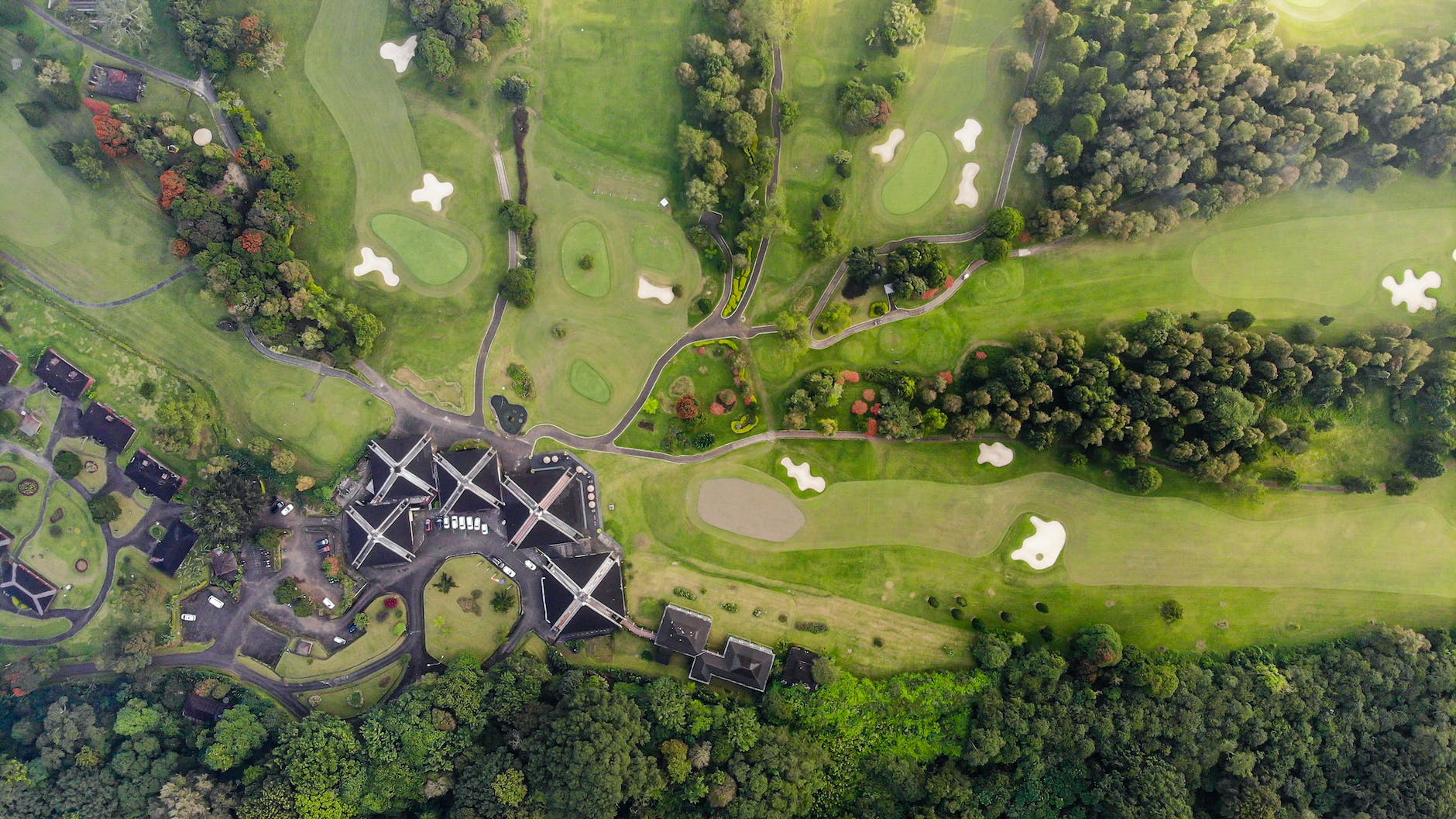The construction of a golf course is a massive undertaking. It requires careful planning and execution from a diverse group of contributors. Many factors can influence the construction time of a new golf course, from the initial design phase to the finalized course.
In the article below, we will cover the steps involved in constructing a golf course and the factors that can impact the time to completion. By understanding the complexities of golf course construction, we can better understand the efforts that go into creating these beautiful and challenging landscapes. We have a lot to cover so let’s jump in!
How Long Does It Take To Build A Golf Course?
The average construction time for a golf course can vary, but it is generally a multi-year process. New golf course builders should expect between 1-3 years for completion. The reason why golf courses take so long to build can be boiled down to 3 main factors. Lets take a look below.

3 Factors Impact The Construction Time Of A Golf Course
Size Of The Course
The size of the course is the main factor that affects the build time of a golf course. A larger course with longer holes will require more time to prepare and landscape due to the increased amount of land that needs to be developed.
Terrain And Climate Conditions
Construction time may also be impacted by the site’s topography and environment. It will take longer to get the course ready for play if the terrain is tough to work with because it is hilly or rocky. Extreme weather events like torrential rain or a drought can also hinder the growth of grass and other vegetation.
Budget Accessibility
The length of time it takes to build a golf course can also be influenced by the funding availability. Construction can take longer if there aren’t enough tools, supplies, or laborers available. Like this, if there is not enough money, construction may be put off until more financing becomes available.
What Work Needs To Be Done To Create The Golf Course Plans?
To create golf course plans, it is necessary to first gather information about the site. This includes collecting topographical data, soil samples, and other environmental considerations. This information is used to understand the unique characteristics of the site and to inform the design process.
After gathering information about the site, the next step is to develop a concept design. This is a preliminary plan that outlines the overall layout and features of the course. It is used to visualize the course and to begin the process of obtaining necessary approvals and permits.
Once the concept design has been approved, a more detailed design is created. This design includes specific information about the layout of the course and the materials that will be used. It serves as the basis for the construction process.
Before construction can begin, it is necessary to obtain any necessary approvals and permits from local authorities and other relevant organizations. This process involves reviewing the plans and ensuring that they meet all relevant regulations.

What Happens During The Construction Of A Golf Course?
Clearing and grading the terrain is the first step in building a golf course. This involves clearing away most of the trees, rocks, or other shrubbery then leveling the ground for the course.
Irrigation and drainage systems are also an essential part of the course’s infrastructure. These structures provide water to the grass and other vegetation as well as ensure that excess water is properly drained away.
Next, the fairways and greens are arranged in accordance with the precise design blueprints. This entails preparing the land, planting grass, and adding any additional elements, such as bunkers and dangers.
Bunkers and other potential risks are built in accordance with the precise design plans. The land may need to be shaped, sand installed, and grass or other vegetation may need to be planted.
Finally, grass is planted on the fairways, greens, and other areas of the course, and other landscaping elements such as trees and shrubs may be added to enhance the aesthetic of the course.
How Long Does It Take For Grass To Grow On A New Golf Course?
Establishing grass on a new golf course is an essential step in the construction process, but it can be a time-consuming process.
There are several factors that can influence the speed at which grass grows on a new golf course, including the type of grass being used, the climate and soil conditions, and the level of care and maintenance provided.
It can take anywhere from several months to a year or more for grass to fully establish itself on a new golf course. The exact timeline will depend on the factors mentioned above, as well as any other unique circumstances of the site. With proper planning and care, however, it is possible to create a thriving and well-maintained golf course.
Grass Type
One of the main factors that affects the growth rate of grass on a new golf course is the type of grass being used. Some types of grass, such as Bent grass and Bermuda grass, are known for their fast growth rates and ability to withstand heavy use.
Other types, such as fescues and ryegrasses, may grow more slowly but are better suited to cooler climates. Choosing the right type of grass for your course is important to ensure that it establishes quickly and thrives in the long term.

Climate
The climate and soil conditions of the site can also impact the growth rate of grass on a new golf course. Grass grows best in climates that are not too hot or cold, with adequate rainfall and moderate humidity levels.
Soil
Soil that is well-draining and rich in nutrients will also support faster grass growth. If the climate and soil conditions are not optimal, it may take longer for the grass to establish itself on the course.
Maintenance
The level of care and maintenance provided to the grass can also influence its growth rate. Proper watering, fertilization, and mowing practices can help to encourage fast and healthy growth. Neglecting these tasks, on the other hand, can cause the grass to grow more slowly or become damaged.
What Can Slow Down The Construction Of A Golf Course?
Environmental concerns can slow down the construction of a golf course. If the site is home to protected species or is in an environmentally sensitive area, it may be necessary to obtain additional approvals or take special precautions during construction. This can add time to the construction process.
Changes to the design or plan can also cause delays. If the design of the course is modified during the construction process, it can impact the timeline and require additional resources.
Budget or funding issues can also impact the construction of a golf course. If the project goes over budget or funding becomes unavailable, it can cause delays until additional resources become available.
Inclement weather is another factor that can slow down the construction of a golf course. Heavy rain, snow, or extreme heat can make it difficult or even impossible to work on the course, causing delays.
Final Thoughts
Building a golf course is a complicated process with many steps and many contributors. Gathering information about the site, developing a design concept, completing a detailed design, obtaining necessary approvals and permits, and building the course itself are all part of the process.
Several factors can influence the length of time it takes to build. These considerations include the course’s size, terrain and climate conditions, the availability of resources and funding, and environmental concerns. Delays can also be caused by inclement weather and changes to the design or plan.
The sooner a course is built, the faster it can start turning a profit. It is always in the best interested of the course builder to stay on track with the build so that local patrons can start teeing it up on a brand new track.
Hopefully, you liked this article and found it informative. Check out our other blog posts if you liked this one!


